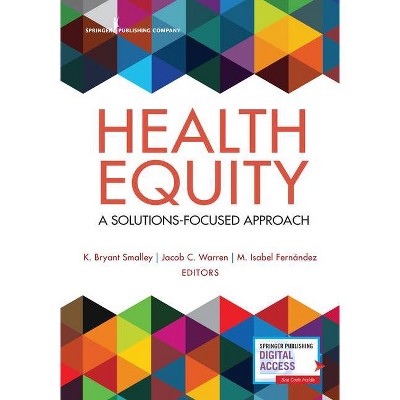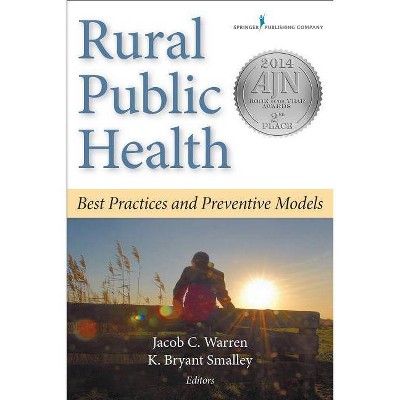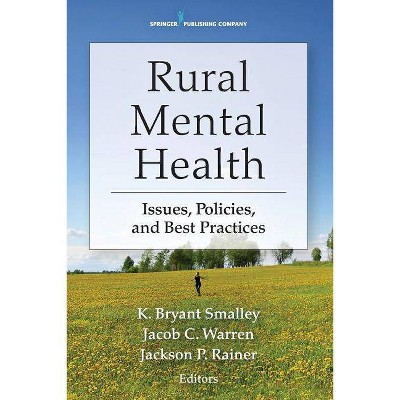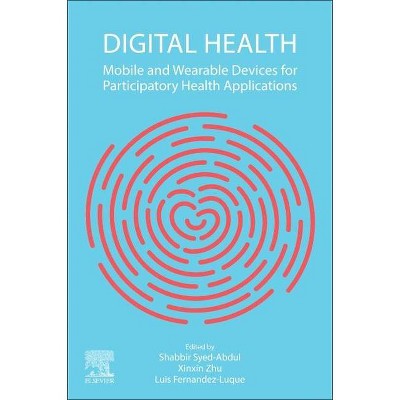Health Equity - by K Bryant Smalley & Jacob Warren & M Isabel Fernandez (Paperback)

Similar Products
Products of same category from the store
AllProduct info
<p/><br></br><p><b> About the Book </b></p></br></br>"It feels as though the field of health equity has finally come into its time. Conversations about the presence of health disparities have evolved into discussions of how to eliminate them, which have in turn evolved into a broader movement to truly achieve equity in health predictors, statuses, and outcomes. The field of health equity is at its core a branch of social justice, and the movement has clearly begun. The road is long, however, and the issues that drive the underlying presence of health disparities remain firmly in place. The field also remains very new, particularly in investigating the unique health and healthcare needs of groups that are not only marginalized in society, but also largely neglected in the scientific literature"--<p/><br></br><p><b> Book Synopsis </b></p></br></br><p><em>Health Equity: A Solutions-Focused Approach</em> is a comprehensive textbook that illustrates existing conditions of health disparities across a range of populations in the United States, positions those disparities within the broader sociopolitical framework that leads to their existence, and most importantly, presents specific ways in which health equity solutions can be designed and implemented. Presenting current theoretical foundations, cultural context, and evidence-based models and interventions all in one, this textbook provides students with the basis to achieve greater health equity in their communities. Edited by award-winning authors and featuring contributions from diverse experts in public health, sociology, psychology, and medicine, this groundbreaking text goes beyond a traditional approach to risk factors and disparities and emphasizes the central role that health equity initiatives must play in public health research and practice.</p><p>The book is divided into three sections, with Section I focusing on providing the context of health equity research and practice. Chapters are structured in a way that both new and experienced students in the field will develop a deeper understanding of topics such as prejudice and discrimination; frameworks and theories; and research and collaboration approaches. Section II addresses the current knowledge of specific populations impacted by issues related to health equity, including African American, Latinx and Hispanic, Asian, American Indian and Alaska Native, Native Hawaiian and Pacific Islander, LGBTQ, Veteran, People with Disabilities, and many more. Authored or co-authored by members of the community being discussed, each of these chapters summarizes how health disparities impact the group, ongoing population-specific models of disparities and equity, emerging programs for achieving health equity, coverage of the most relevant aspects of intersectionality, and concluding exercises such as case studies and current events. Section III then highlights the role of cultural humility in achieving health equity. With its solutions-focused and community-affirming approach, <em>Health Equity</em> provides graduate and undergraduate students of public health with evidence-based models to help advance health through diversity, inclusion, and social justice.</p><ul><strong>Key Features: </strong><li><strong>Origins and Theories</strong> - Discusses the sociocultural and political origins of health disparities and the major theories that underlie an understanding of health equity</li><li><strong>Solutions-Focused</strong> - Describes emerging models and gives best practices in designing new programs</li><li><strong>Diverse Population Coverage</strong> - Provides historical context, sociocultural dynamics, and population-specific evidence-based programs from the voices of the communities being discussed</li><li><strong>Intersectionality Perspective</strong> - Highlights the role that overlapping and interdependent identities play in promoting health equity and the interventions that build from this perspective</li><li><strong>Case Studies and Real-World Examples</strong> - Demonstrates how to apply health equity improvement approaches in different contexts</li><li><strong>eBook access</strong> -IIncluded with print purchase for use on most mobile devices or computers</li><li><strong>Instructor's Packet</strong> - With an Instructor's Manual, PowerPoint slides, Test Bank, and a Sample Syllabus</li></ul>
Price History
Cheapest price in the interval: 57.99 on October 22, 2021
Most expensive price in the interval: 57.99 on November 8, 2021
Price Archive shows prices from various stores, lets you see history and find the cheapest. There is no actual sale on the website. For all support, inquiry and suggestion messagescommunication@pricearchive.us




















